iPad Running Slow? 10 Ways to Speed Up Your iPad
Noticing your iPad’s performance isn’t what it used to be can be disheartening. Whether it’s lagging apps or delayed response times, the frustration is real. But fear not, as solutions are within reach. By understanding the common causes and applying targeted fixes, you can rejuvenate your iPad’s speed and reliability. With years of tech experience and a track record of troubleshooting, we’re here to guide you through revitalizing your device.
Why Your iPad is Slow
If you’ve noticed your iPad running slow, several factors could be at play. If you understand the root cause you will be able to apply the right solutions from the get go. Most of the reasons can be divided into following categories.
- Outdated Software: iPads running older versions of iOS might not only miss out on new features but also lag behind in performance and security enhancements that newer updates bring. As developers optimize apps for the latest operating systems, older versions might struggle with compatibility and efficiency. Regularly updating your iOS ensures that you are not only securing your device against vulnerabilities but also boosting its operational efficiency. Visit Apple’s official update guide for instructions on updating your iPad.
- Overloaded Storage: A nearly full iPad can significantly slow down your operations. This is because iOS requires some free space to create temporary files for everyday tasks. When your storage is maxed out, your device struggles to manage these files efficiently. Managing your storage isn’t just about deleting old apps and media; it’s also about understanding which files consume the most space and optimizing how you store data.
- Background App Activity: Apps that refresh their content in the background consume processing power and battery life, which can lead to slower system performance. Although iOS is designed to manage background activity efficiently, manually controlling which apps can refresh in the background can enhance performance.
- Aging Hardware: As technology advances, newer applications and updates are designed to leverage the increased capabilities of latest devices. Older iPads may not have the hardware capacity to efficiently handle these newer demands. This is often not a result of intentional obsolescence by manufacturers, but rather an inevitable phase of technological progression where older models are optimized for the software and performance demands of their release period. As such, they may struggle with the more complex tasks demanded by newer software.
Identifying whether the issue is due to an iPad being slow or specific apps lagging is important. For the latter, try reinstalling the problematic app. If general slowness persists, a more detailed investigation into your iPad’s health might be necessary. In the following section, we’ll walk through solutions to rejuvenate your device, ensuring it runs smoothly again. Get ready to give your iPad the boost it needs.
How to Fix a Slow iPad
This section will guide you through a variety of strategies to optimize performance, from simple adjustments to more comprehensive solutions. Whether you’re dealing with slow app launches, lagging responses, or overall sluggishness, these methods are designed to enhance your iPad’s efficiency and restore its swift functionality.
Method 1: Check Network
A stable internet connection is key for optimal iPad functionality. Weak Wi-Fi can cause delays, especially in web-based applications wich in turn may look like iPad is lagging. Please do the following if issues you’re facing are connected to the web-based tasks:
- Assess Wi-Fi Signal Strength: A strong signal is indicated by a full Wi-Fi icon at the top of your screen. Weak signals might lead to slow performance, especially in online tasks.
- Toggle Wi-Fi: Switch Wi-Fi off and back on in your iPad’s settings to refresh the connection. This can resolve minor connectivity issues.
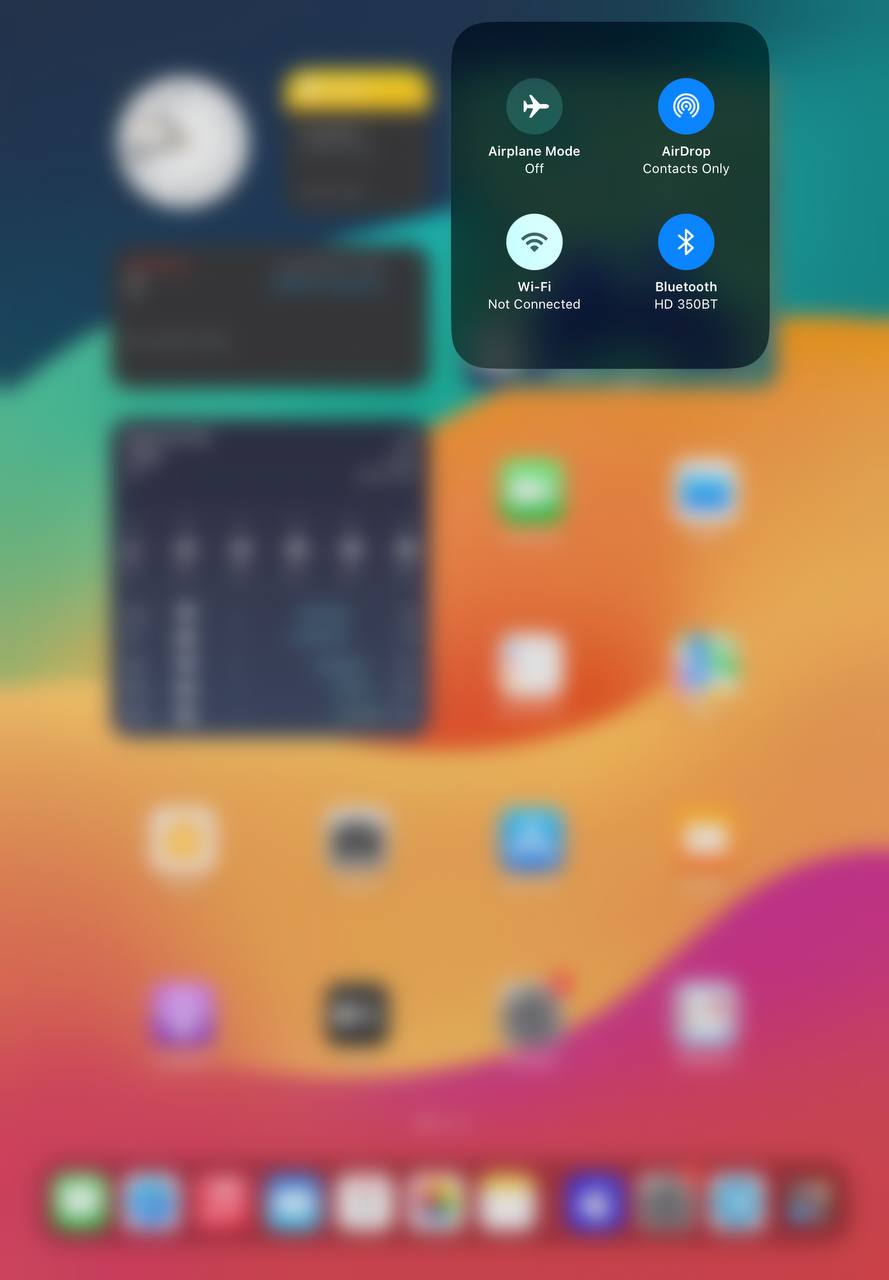
- Forget and Reconnect to Network: In Wi-Fi settings, tap the “i” next to your network, select “Forget This Network,” and reconnect. This step re-establishes the network connection.
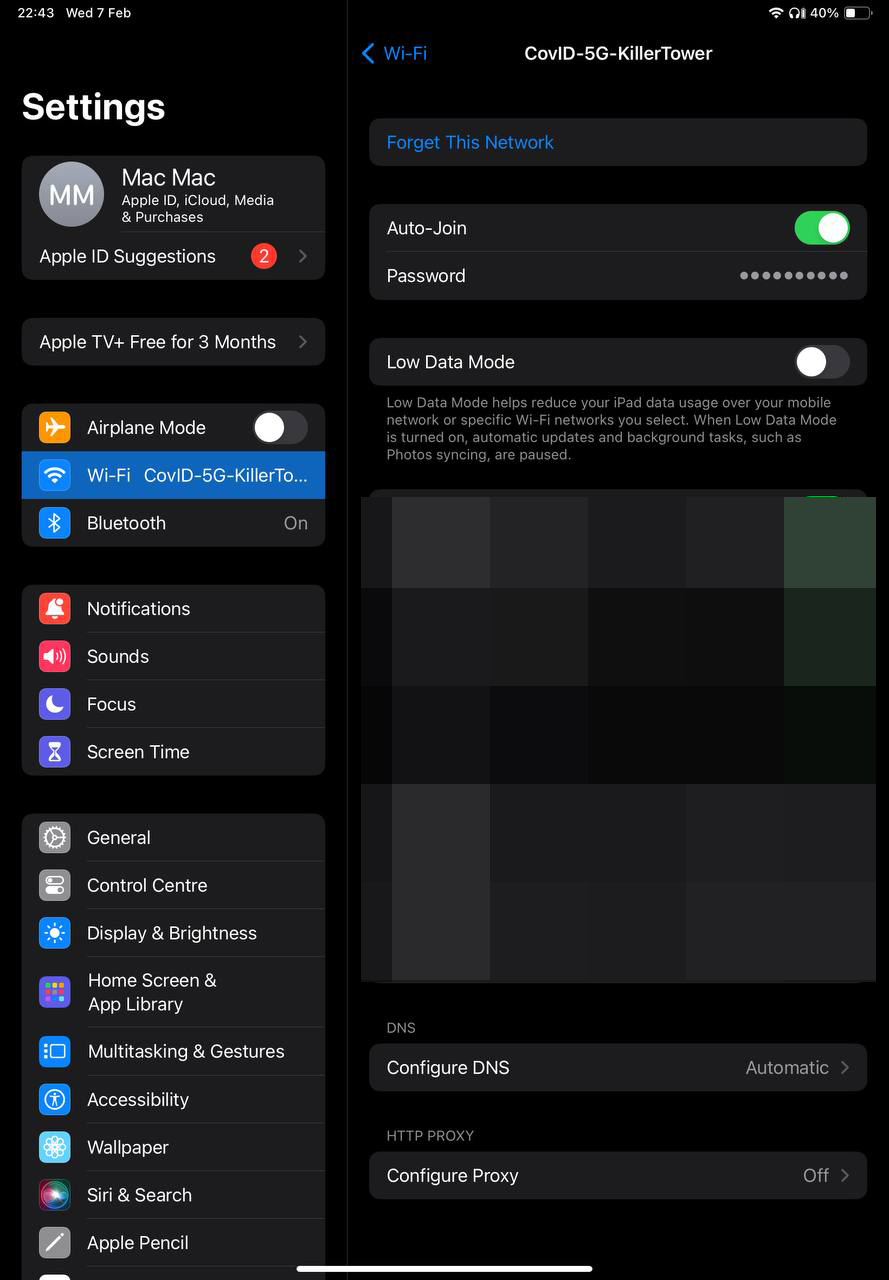
- Restart Your Router: Unplugging your router for 30 seconds and plugging it back in can resolve network issues by refreshing the connection.
- Eliminate Interference: Make sure that there are no physical obstructions or electronic devices that could interfere with the Wi-Fi signal to your iPad.
- Update Router Firmware: Check with your router’s manufacturer for instructions on updating its firmware, which can enhance network performance and security.
If your iPad still experiences network-related slowness after these steps, consider contacting your internet service provider or visiting Apple’s iPad support for further assistance.
Method 2: Close Apps
Apps running in the background can slow down your iPad. Force closing unresponsive or unnecessary apps can free up system resources and improve iPad performance.
- Access App Switcher: Double-click the Home button on iPads with a Home button, or swipe up from the bottom of the screen and pause on newer models without a Home button, to open the App Switcher.
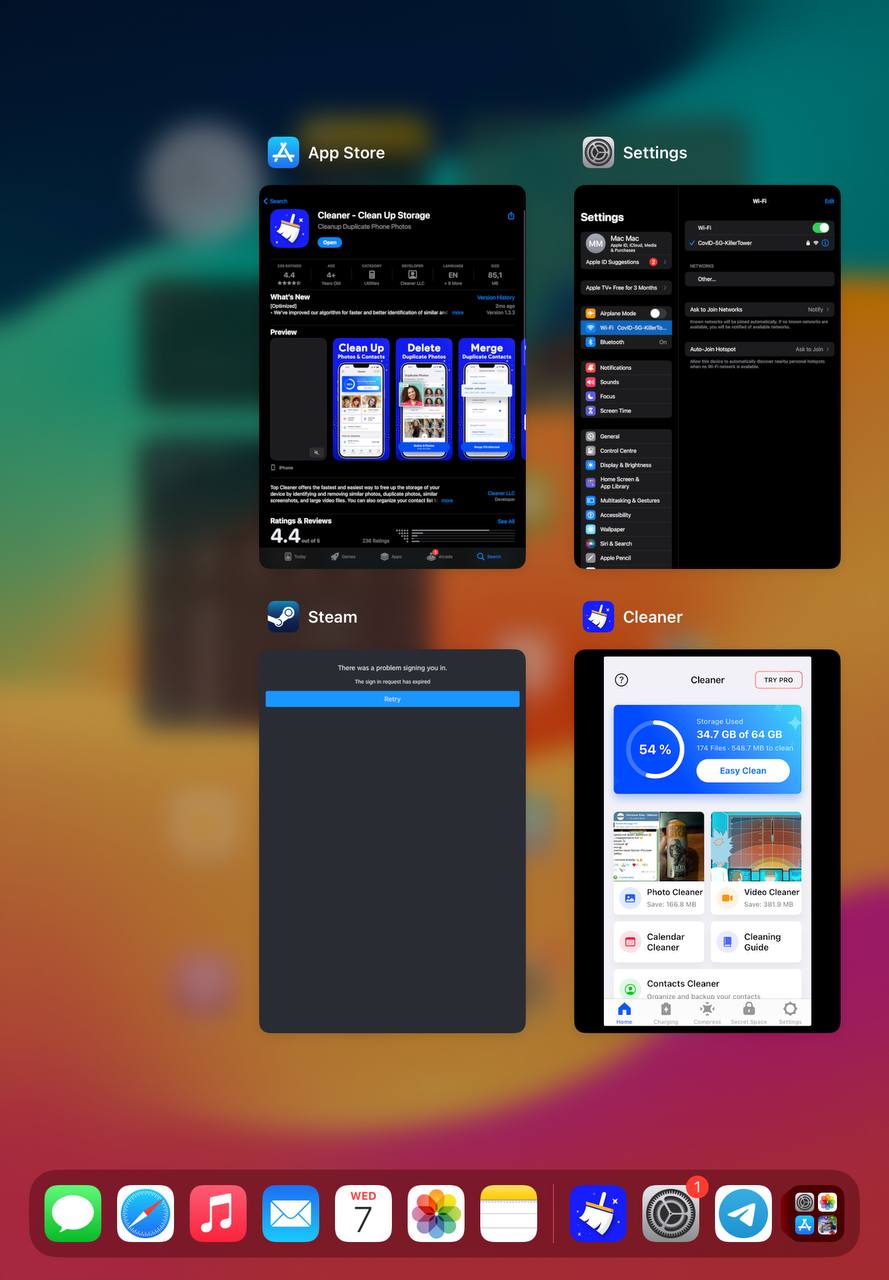
- View Open Apps: The App Switcher displays all apps currently running or suspended in the background. Swipe left or right to browse through them.
- Close Apps: Swipe up on an app’s preview to close it. This action removes the app from active memory, potentially speeding up your iPad.
Closing apps that are not in use can help prevent them from consuming valuable system resources. However, it’s worth noting that iOS manages background apps efficiently, and frequently closing apps may not always result in significant performance improvements. Use this method as needed, particularly with apps that are known to be resource-intensive or are behaving erratically.
Method 3: Free Up Space
Low storage can significantly affect your iPad’s speed. Maximizing available storage can improve your iPad’s performance, especially if it’s nearing its capacity.
- Check Storage Usage: Go to Settings > General > iPad Storage. You’ll see a breakdown of what’s consuming your storage, such as apps, photos, and media files.

- Review Recommendations: iOS may offer recommendations to free up space, like auto-deleting old conversations or offloading unused apps. Consider these options for quick savings.
- Delete Unused Apps: From the iPad Storage page, tap on an app you no longer need and select “Delete App”. Confirm to remove the app and its data. Alternatively you can offload an app to keep it’s data intact.

- Manage Media Files: Review your photo library and media apps. Delete unnecessary items like duplicate photos, or transfer them to cloud storage or a computer to free up space.

- Clear Safari Cache: For web browsing storage, go to Settings > Safari and tap “Clear History and Website Data” to free up some space.
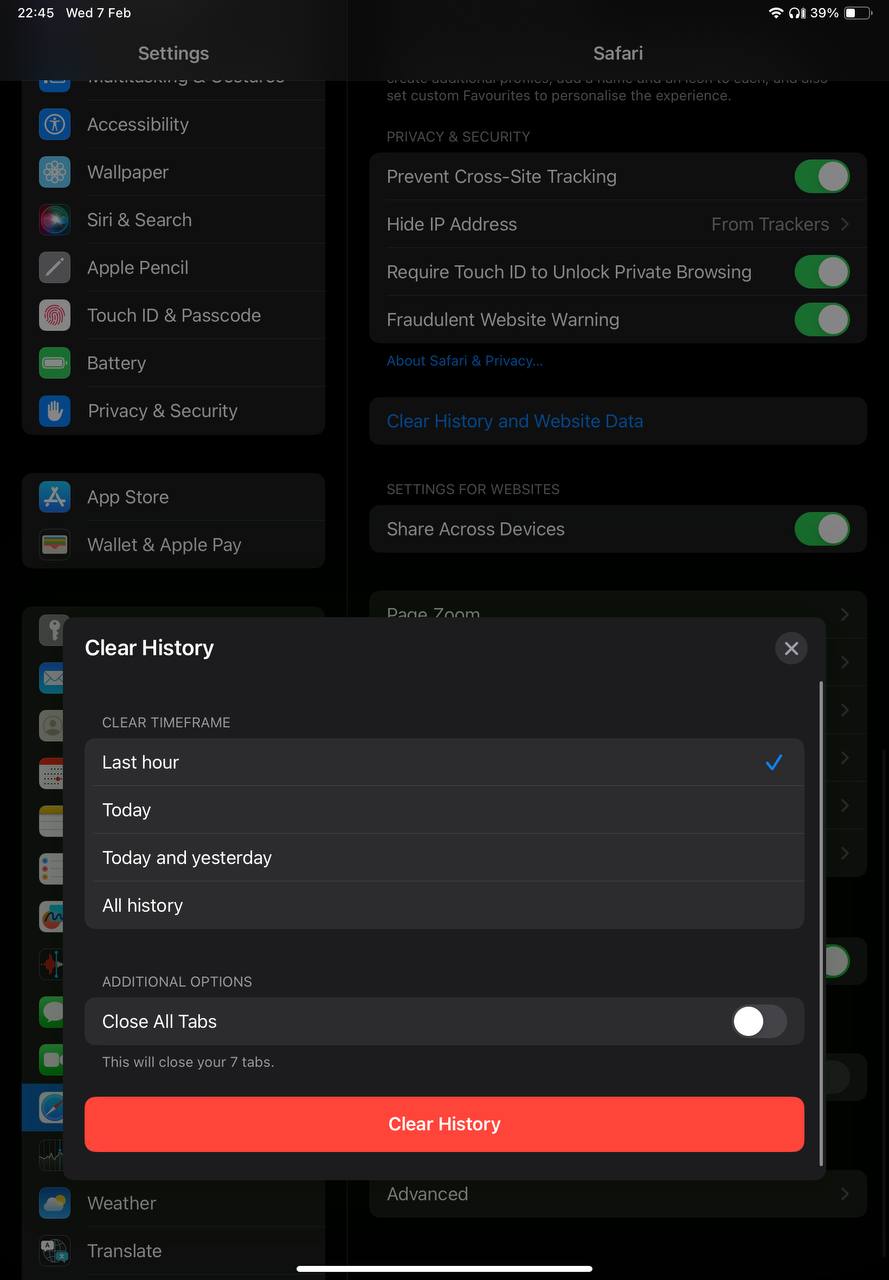
Keeping your iPad’s storage in check allows for a smoother performance and is a good practice that can help avoid issues with downloading new apps and updating iOS in the future. Regularly review your storage usage and manage data accordingly. Some third-party apps can help you in this process.
Method 4: Disable Background App Refresh
This feature allows apps to update content in the background, which can slow down your device. Turning it off for apps that don’t need constant updates can save battery life and improve performance.
- Access Background App Refresh Settings: Open Settings > General > Background App Refresh. Here, you can manage how apps update content in the background.
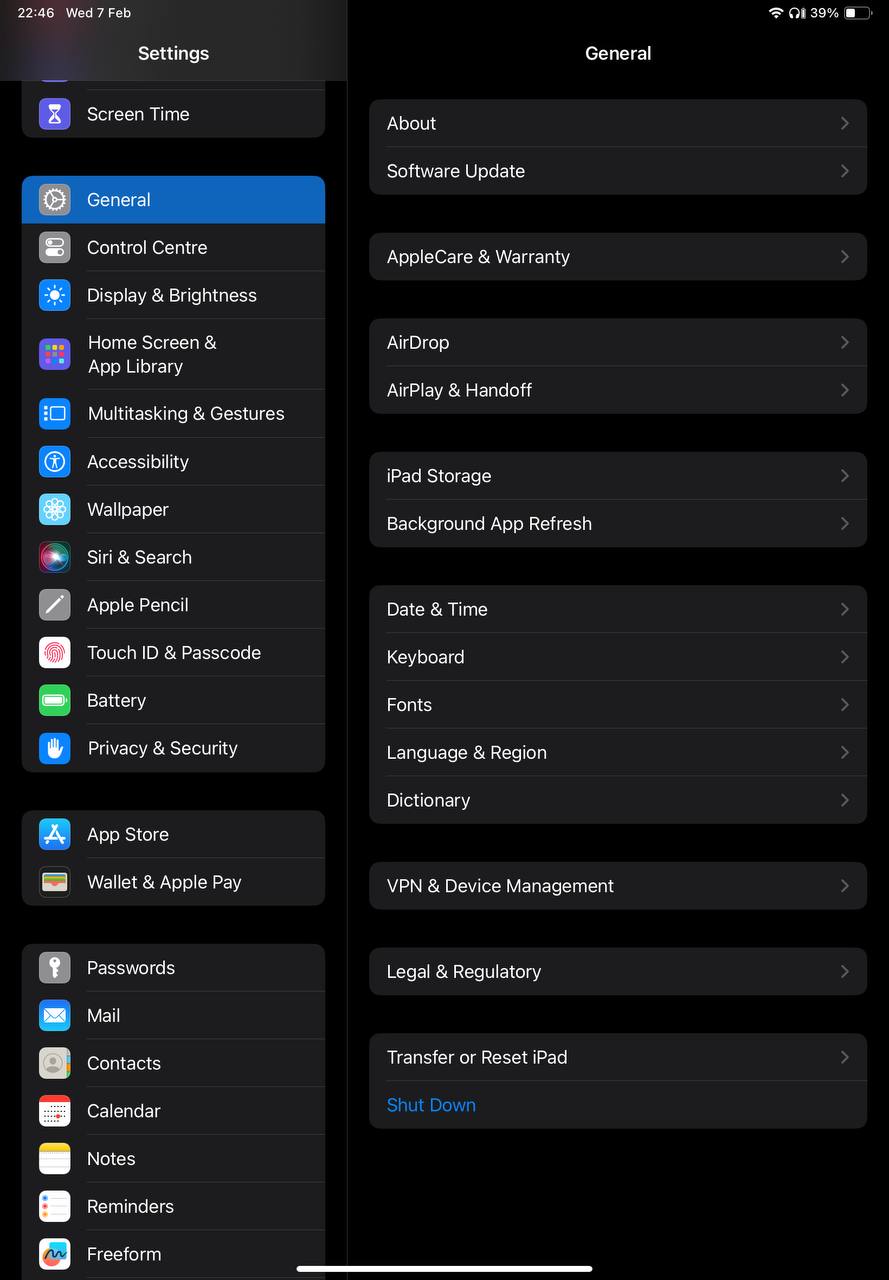
- Adjust Settings for Individual Apps: You’ll see a list of apps that use this feature. Toggle off the switch next to apps that don’t need to update in the background. This can help reduce unnecessary data usage and processing, potentially speeding up your iPad.
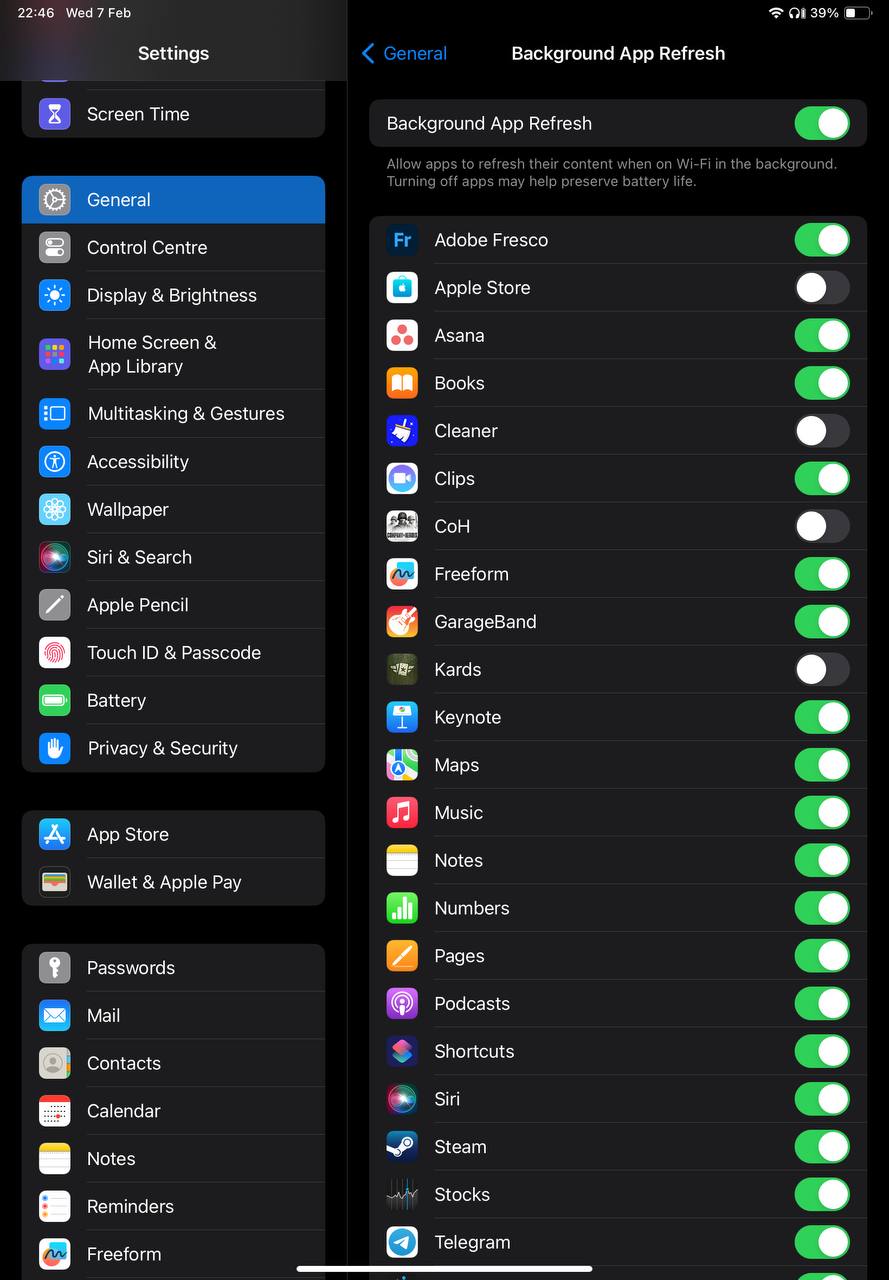
- Consider Global Disabling: For a broader approach, you can disable Background App Refresh entirely at the top of the menu by selecting ‘Off’. This stops all apps from refreshing in the background, maximizing performance gains.
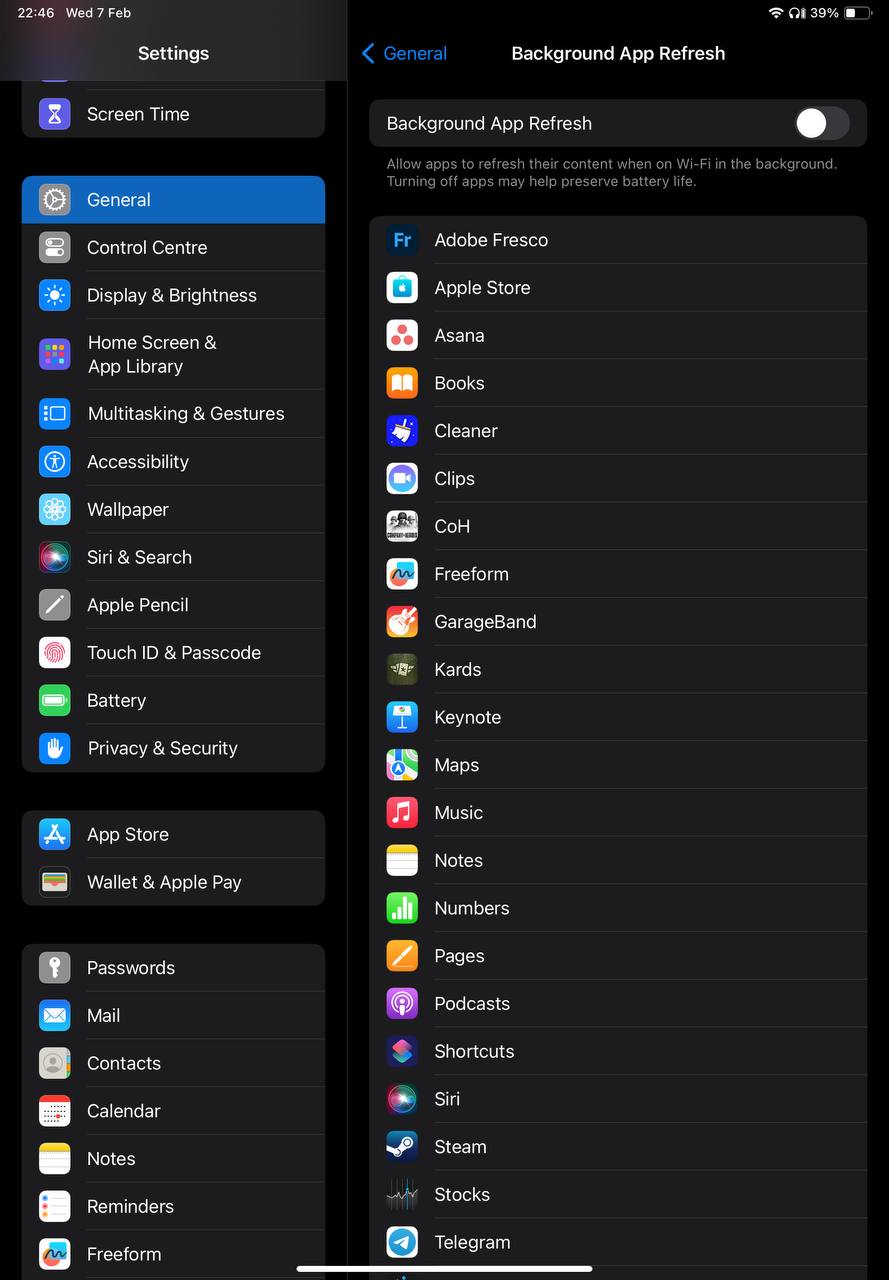
Note: Disabling this feature may mean that some apps won’t have the latest content ready when you open them, but it can be beneficial in case when your iPad started to slow down.
Method 5: Adjust Visual Effects
Reducing motion and transparency can help improve your iPad’s performance by reducing the graphical demands.
- Reduce Motion: Navigate to Settings > Accessibility > Motion, and toggle on Reduce Motion. This setting minimizes animation effects like parallax icons, which can make transitions smoother and quicker.
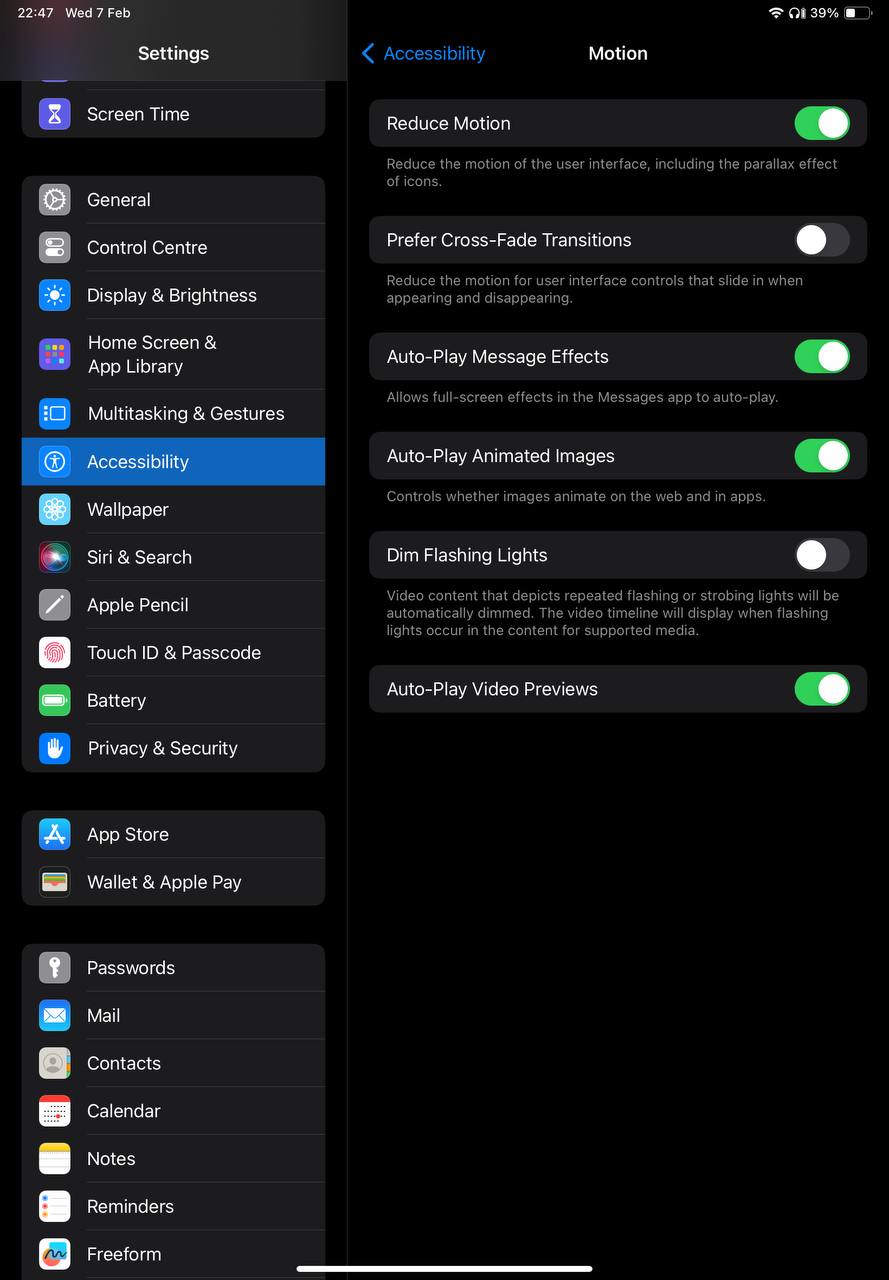
- Reduce Transparency: Still in the Accessibility menu, find and select Display & Text Size, then toggle on Reduce Transparency. This reduces the visual effects on certain backgrounds and menus, further easing the load on your device’s processor.
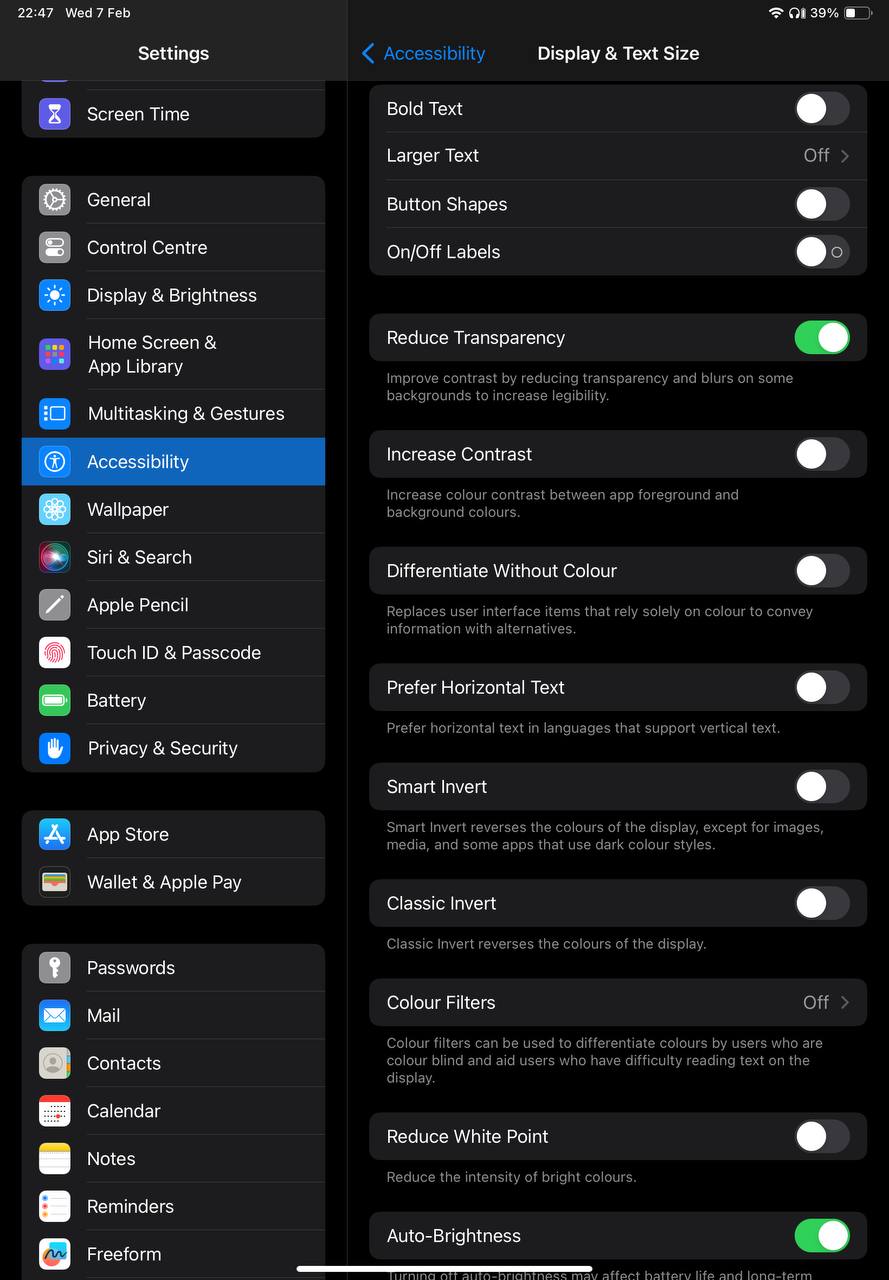
By adjusting these settings, you can potentially improve your iPad’s responsiveness, especially in navigating between apps and menus.
Method 6: Disable Automatic Updates
Automatic updates for apps and iOS can consume resources. Disabling automatic updates for apps and iOS can help manage your iPad’s resources more effectively, especially if you prefer to control when updates occur.
- Manage App Updates: Go to Settings > App Store. Here, you’ll find the Automatic Downloads section. Toggle off the Updates option to prevent apps from updating automatically. This allows you to update apps manually when it’s convenient for you, ensuring that updates don’t interfere with your iPad’s performance during critical usage times.
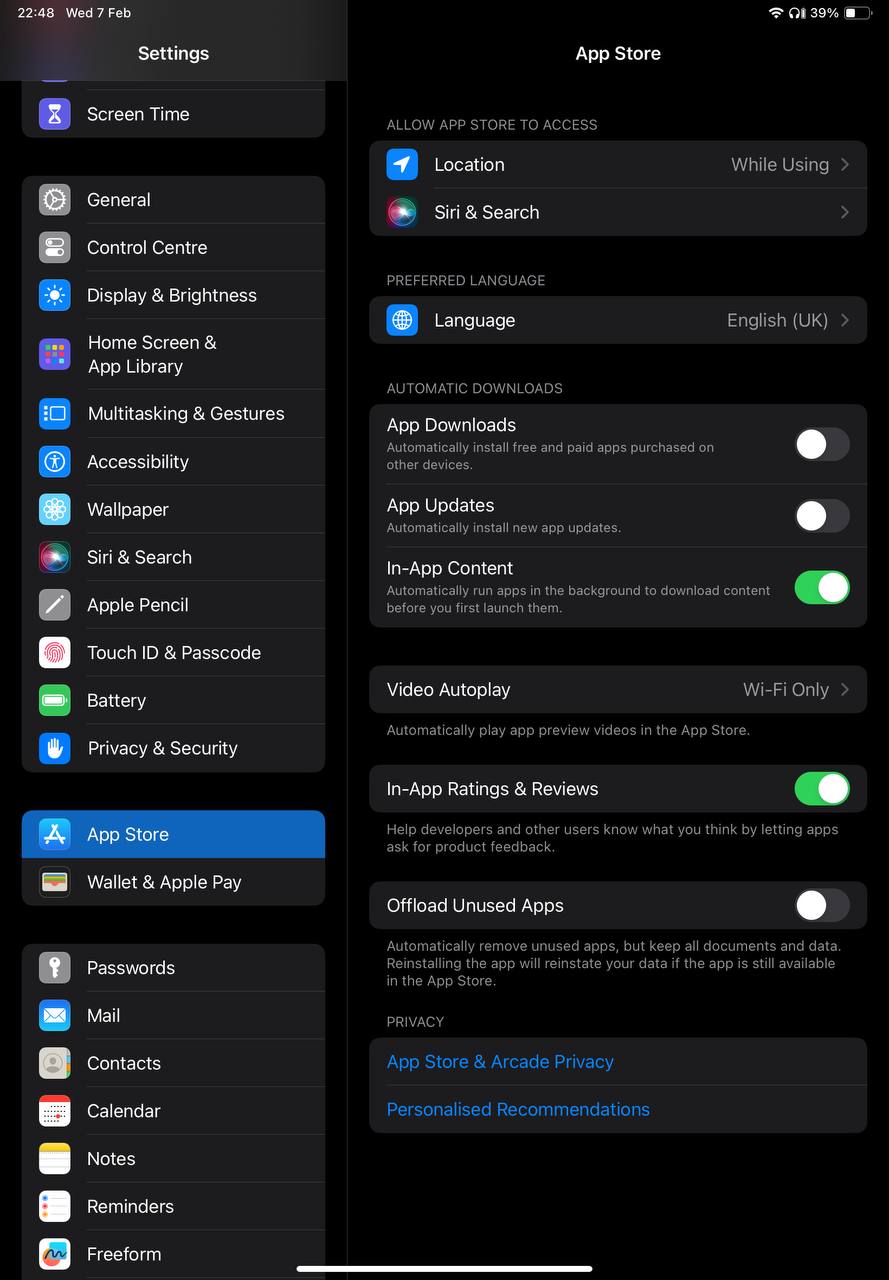
- Control iOS Updates: While automatic iOS updates can keep your device secure and up-to-date, they can also be resource-intensive. To manage this, navigate to Settings > General > Software Update. Tap Automatic Updates and then toggle off iPadOS Updates in both Automatically Install and Automatically Download sections. This will require you to manually check for and install iOS updates, giving you control over when these significant updates occur.
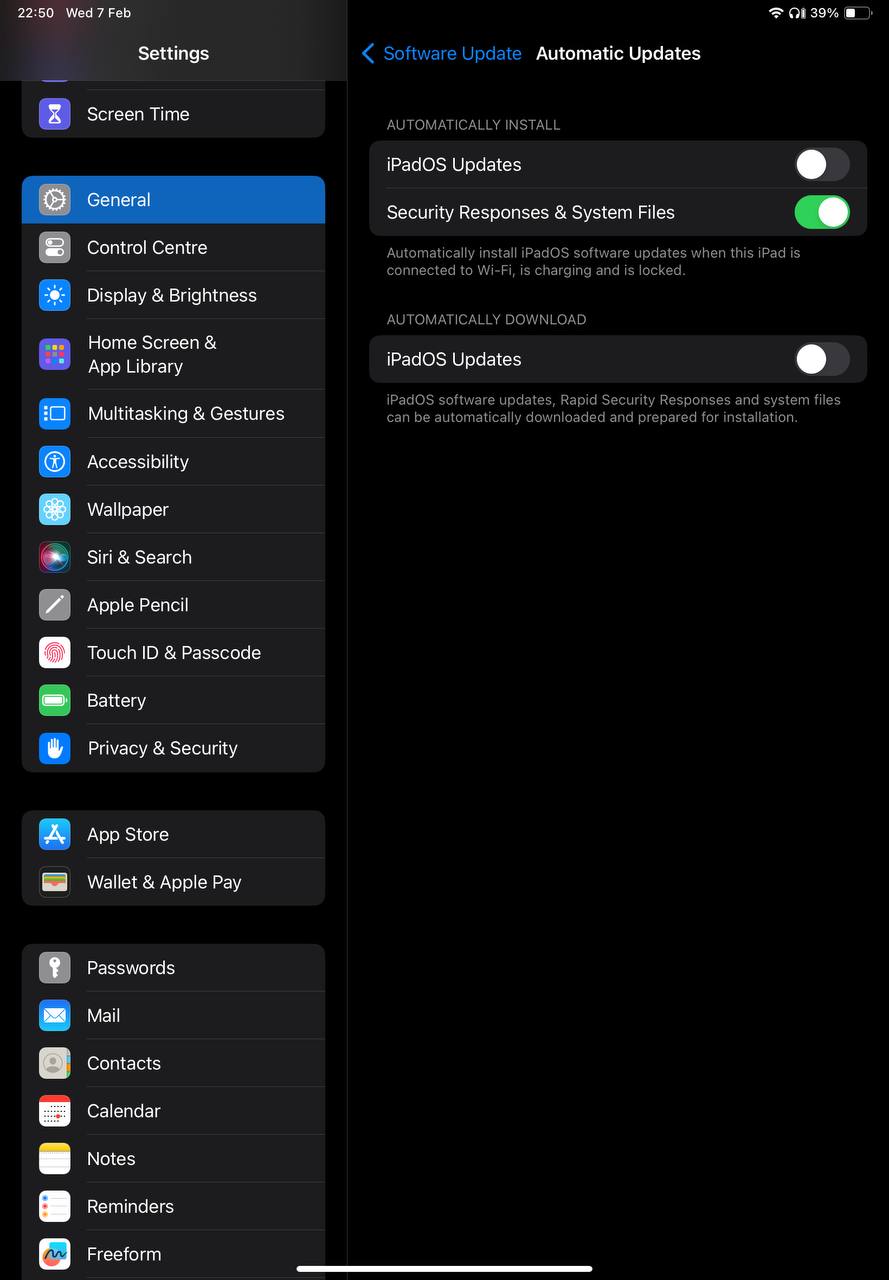
By managing updates manually, you can ensure that your iPad remains responsive and that updates don’t consume resources when you need them most.
Method 7: Restart Your iPad
Occasionally, a simple restart can resolve minor glitches and improve performance by refreshing the system.
- Press and Hold the Buttons: On most iPads, press and hold the top and volume button until the power off slider appears.
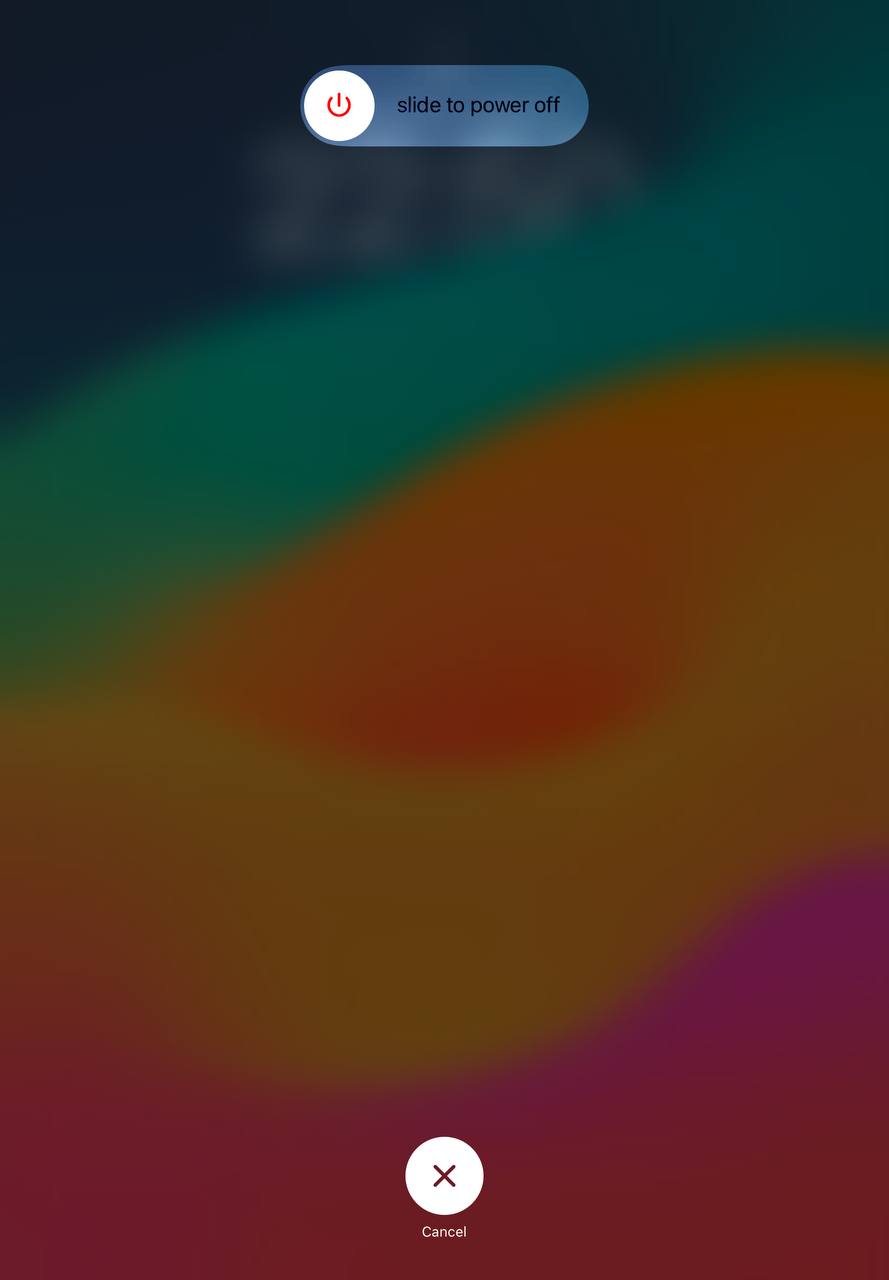
- Slide to Power Off: Drag the slider, and wait for your device to turn off. This process can take a few seconds.
- Turn Your iPad Back On: After the device has powered off, press and hold the top (or side) button again until you see the Apple logo. This signifies that your iPad is restarting.
If your iPad is unresponsive and you’re unable to restart it using the slider, try a force restart by pressing and quickly releasing the volume up button, then the volume down button, and finally, press and hold the top button until the device restarts.
Method 8: Update Software
Keeping your iPad updated with the latest iOS version can fix bugs and improve speed.

- Check for Updates: Open Settings > General > Software Update. Your iPad will automatically check for available updates.
- Download and Install: If an update is available, tap Update Now. You may need to enter your passcode and agree to terms and conditions.
- Complete the Update: Keep your iPad connected to Wi-Fi and plugged into power until the update is complete. The device may restart several times during the process.
For automatic updates, toggle back on Download iOS Updates and Install iOS Updates in the Software Update settings.
Method 9: Perform Factory Reset
If all else fails, consider a factory reset as a last resort. It erases all data and settings. Ensure you have a backup before proceeding.
- Backup Your iPad: Go to Settings > [your name] > iCloud > iCloud Backup and select Back Up Now to ensure you have a recent backup of your device.

- Start the Reset Process: Navigate to Settings > General > Trasnfer or Reset iPad and tap Erase All Content and Settings.
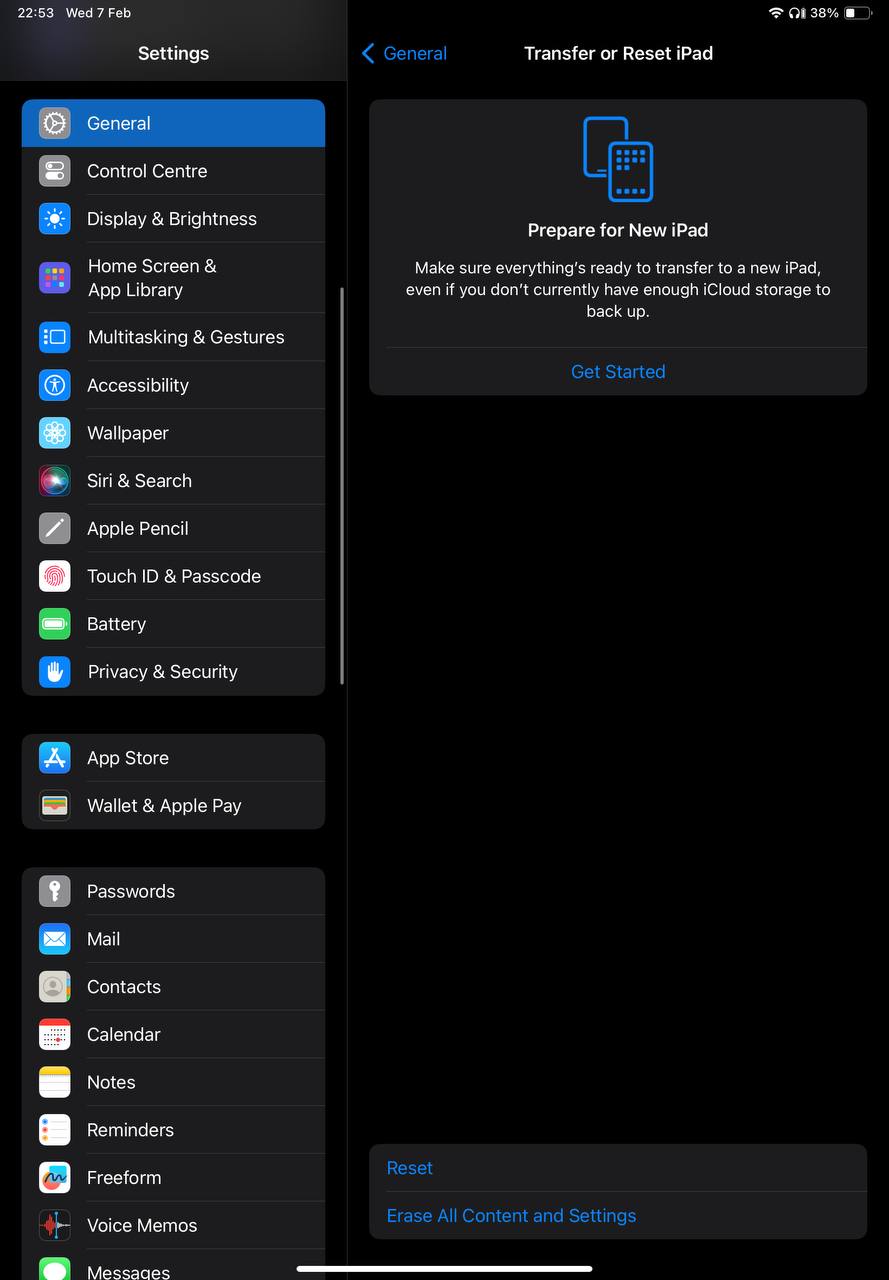
- Confirm the Reset: You may need to enter your passcode and Apple ID password to confirm the reset. Follow the on-screen instructions to complete the process.
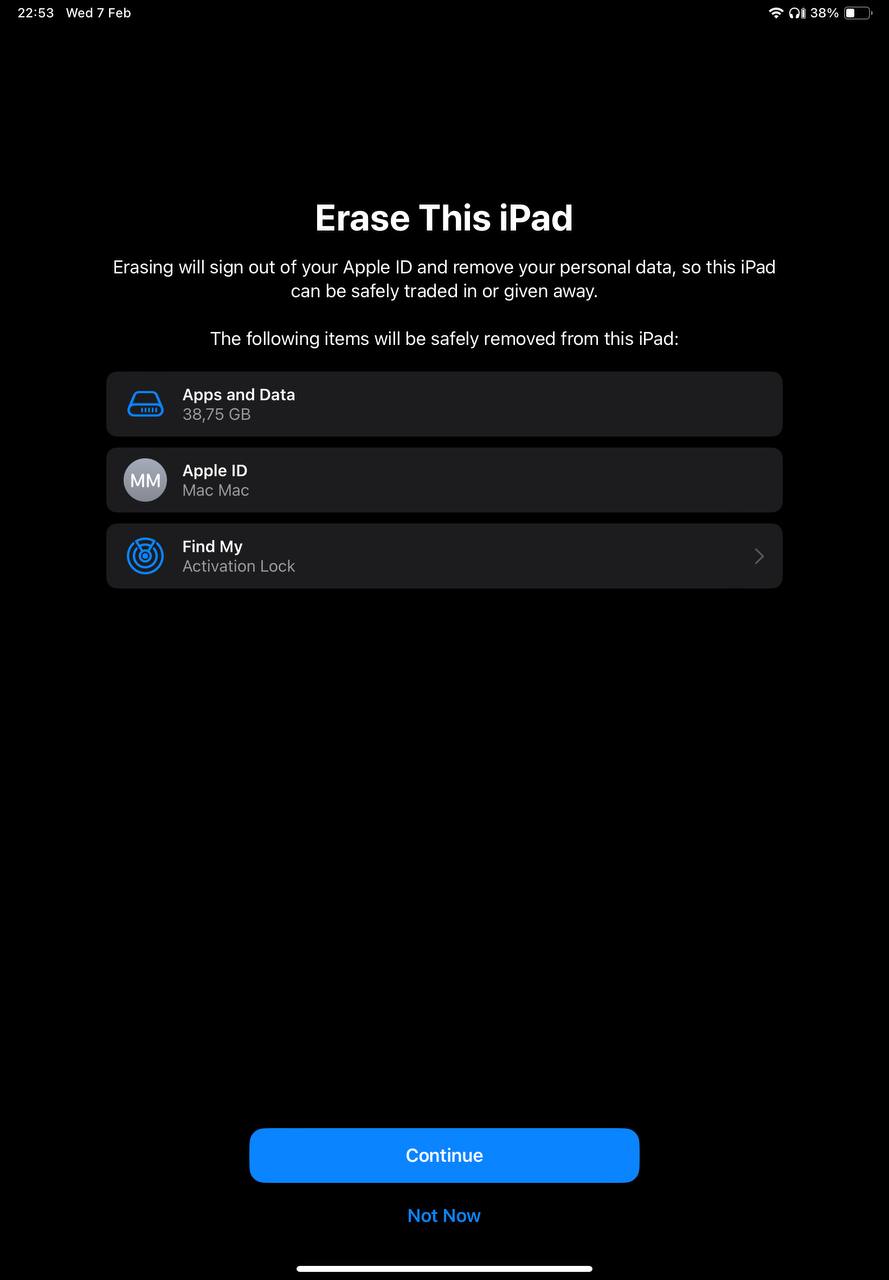
After the reset, your iPad will restart as if it were new. You can then set it up as a new device or restore from a backup.
Method 10: Check Your Battery Health
The battery health of your iPad can significantly influence its overall performance. As the battery ages, it may not be able to provide peak performance, which can result in your device feeling slower, especially during demanding tasks. Monitoring and managing your battery health can help maintain your iPad’s performance and extend its usable life.
Impact of the Battery Health on Your iPad’s performance
- Maximum Capacity: This is a measure of your battery’s capacity relative to when it was new. A lower percentage indicates a battery that has experienced some wear and may not hold as much charge as it once did.
- Peak Performance Capability: If your iPad is unable to deliver peak performance, iOS will apply performance management techniques to prevent unexpected shutdowns, which might slow down your device.
How to Check Battery Health:
- Navigate to Settings > Battery > Battery Health.
- Here, you will see the Maximum Capacity and Peak Performance Capability of your battery.
- If the maximum capacity is significantly low (typically below 80%), it might be time to consider a battery replacement to restore performance.
You can use these tips to preserve battery health
- Avoid Extreme Temperatures: Try to use your iPad in environments where the temperature is between 0º and 35º C (32º to 95º F). Extreme temperatures can permanently damage battery capacity.
- Optimize Settings: Features like auto-brightness and Wi-Fi usage can help reduce battery drain. Navigate to Settings > Display & Brightness and enable Auto-Brightness. Also, keep Wi-Fi on during sleep to reduce data fetching tasks.
- Use Low Power Mode: Though more commonly used on iPhones, enabling Low Power Mode when your iPad’s battery is low can temporarily reduce background activity and lower the power consumption. Activate it by going to Settings > Battery.
If your iPad’s battery health is compromised and it affects usability, consider replacing the battery. Apple offers battery replacement services that can restore full functionality to your device. This is especially worthwhile if the iPad’s hardware is still adequate for your needs but is being bottlenecked by reduced battery performance.
By regularly checking and managing your battery health, you can ensure that your iPad continues to perform optimally. Implementing these practices not only extends the life of your device but also enhances user experience by maintaining efficiency and speed.
When DIY iPad Optimization Methods Fall Short
Even after implementing various DIY strategies to speed up your iPad, you might find that the device still doesn’t perform as expected. This could indicate deeper issues that require professional attention or different measures. Here’s what you can do when self-help methods don’t resolve the sluggishness:
Consult Apple Support
If your iPad continues to perform poorly, contacting Apple Support can provide you with professional guidance. Apple technicians can run diagnostic tests that are not available to the public to determine if there’s a hardware problem or a software issue that needs special attention.
Visit an Authorized Service Provider
Sometimes, physical components like the battery or processor may be failing. Visiting an authorized Apple service provider allows a certified technician to assess and repair hardware issues, ensuring that any replacements or repairs are performed to Apple’s standards.
Consider Upgrading Your Device
If your iPad is several generations old, it might no longer be capable of handling the latest applications and operating system updates efficiently. In such cases, it might be more cost-effective and satisfactory to upgrade to a newer model that can meet the demands of current software and usage.
Trade-in or Recycle
If upgrading, consider Apple’s trade-in program, which can provide you with credit towards a new device. If your iPad is too old for a trade-in value, recycling it responsibly is a great way to ensure that the environmental impact is minimized.
Explore Alternative Solutions
Look into alternative solutions such as installing a third-party performance management app, though be cautious and choose software from reputable developers. Some apps can offer additional insights into your device’s performance and help manage resources more effectively.
By considering these steps, you ensure that you have exhausted every possible method to restore your iPad’s performance. Remember, ongoing maintenance and timely upgrades are key to enjoying a smooth and responsive device experience.
Conclusion
Reviving your iPad’s speed isn’t just a possibility—it’s a reality with the right steps. From clearing out unused apps to updating your software, each method we’ve explored offers a pathway to a smoother, more responsive iPad. Remember, regular maintenance is key to keeping your device running smoothly. By applying these methods, you can improve your overall user experience while also extending the life of your iPad. Just try these proven solutions, and watch your iPad return to its former glory.


















